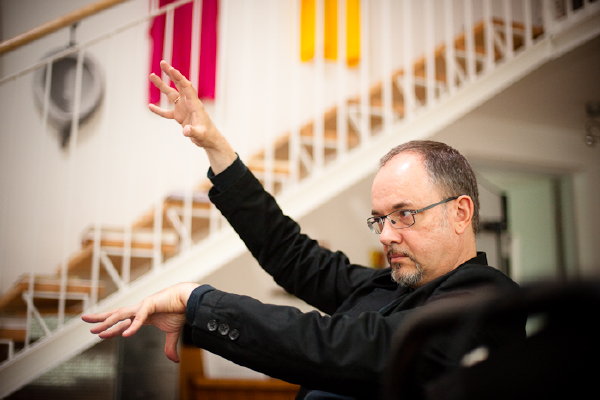This is a rather long podcast about "exploring what it means to listen."
Kevin Quigley (producer) and
Adam Asnan (composer) discussing how they approach listening. The program comes from the UK Institute of Contemporary Arts.
Whoever takes the time to listen to the podcast will find that it's not just the listening but also the story-telling that keeps us interested. The way
Morton Feldman, Glenn Gould or
Filter Feeder do it. The moderators' approach to listening in this program is through detecting and consuming exterior sounds, unlike spiritual listening, where the inner rate of vibration creates the sound. Never the less, I do think this podcast offers a valuable tool to learn to understand someone else's approach to listening. (From ica.org.uk)
---------------------------------------------------------------------------------
Part 1:Partial description from the site:The art of listening: a closer listening, using a mellow sharp ear -- a middle ear that concentrates on every pitch of sound, bringing one closer to a fuller absorption of life. For the next two podcasts, we have a special 'slow winter edition' where we will be exploring exactly what it means to listen to sound, and therefore music.
What is the 'art of listening'? Is there even an art of listening? If so, what is involved in the art of listening? Why is it important for us to understand and explore sounds: is a act of survival, part of our being, or something more this that we can not explain or understand? (From ica.org.uk)
 Click here to listen/download part 1
Click here to listen/download part 1 (95 minutes, 98.1 MB in size)
To get to the main site to read about the music and more click on the picture. There are also links to the respective artist's sites.
+++++++++++++++++++++++++++++++++++++++++++++++++++++++++
There is lots of verbal discussion on how composer Adam Asnan sees music, not much actual sound to listen to in part 2.
---------------------------------------------------------------------------------
Part 2:Partial description from the site:"The art of music is no longer limited to the sounding models of instruments and voices. Electo-acoustic music opens access to all sounds, a bewildering sonic array ranging from the real to the surreal and beyond." Denis Smalley, electro-acoustic composer. (From ica.org.uk)
Part 2 of the art of listening flows into the ambiguous nature of electro-acoustic music, a world of infinite reflection, indeterminacy and transformation.
 Click here to listen/download part 2
Click here to listen/download part 2 (62 minutes, 65 MB in size)




 Click here to listen/download part 2 (62 minutes, 65 MB in size)
Click here to listen/download part 2 (62 minutes, 65 MB in size)